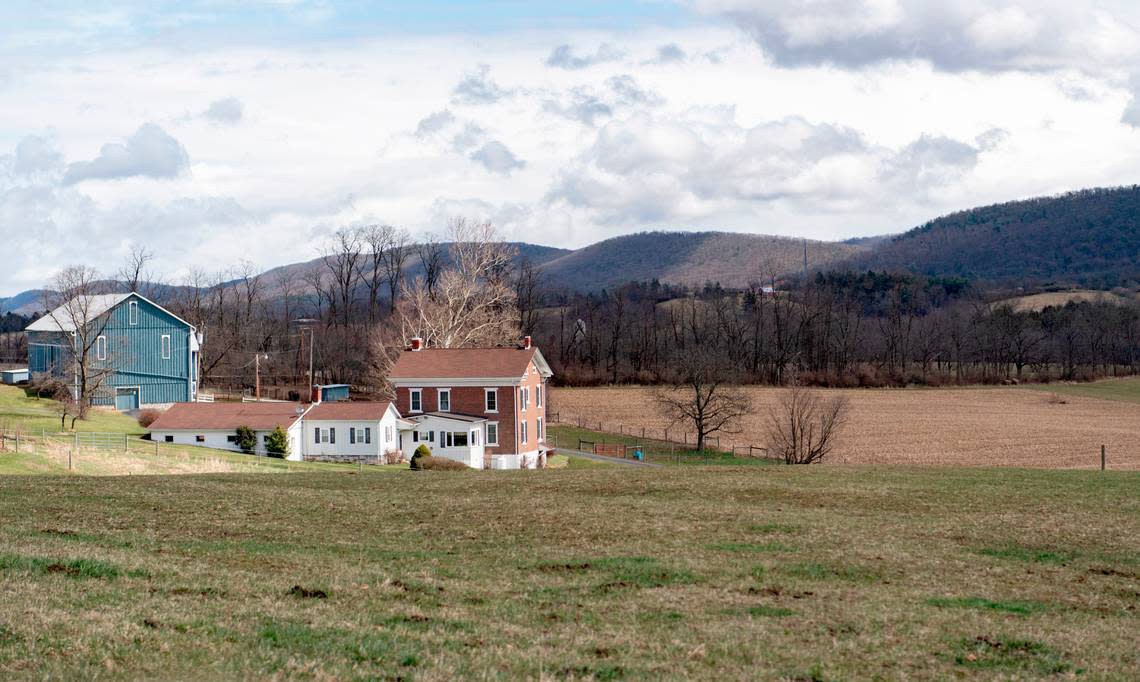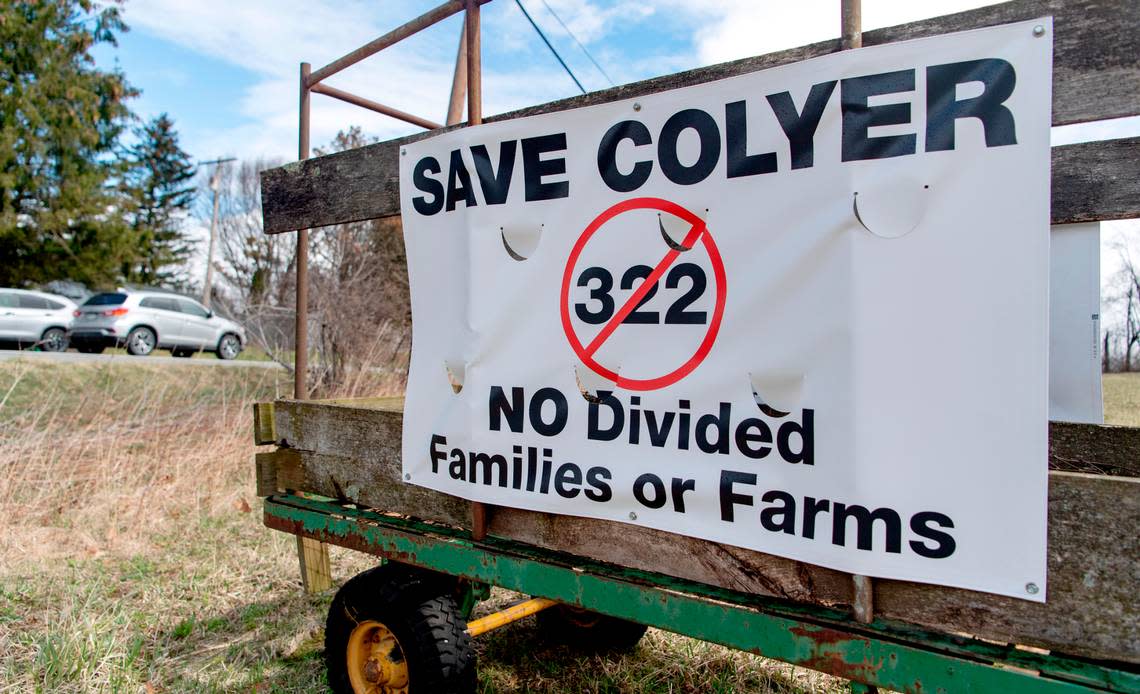PennDOT recommends routes for State College connector. The options would put some out of business
Pennsylvania’s transportation agency identified for the first time Wednesday the three routes it believes should move forward for further study as part of a major highway project in rural Centre County.
All three routes — narrowed down from nine — would bring the State College Area Connector project through the U.S. Route 322 corridor, a move that could be ruinous to generational family farms that sit in its potential path.
The Pennsylvania Department of Transportation’s report in its current state did not recommend moving forward with any of the three routes that would have run through the state Route 144 corridor.
Jesse Darlington, whose family has owned a 250-acre farm for more than three decades in Potter Township, wondered aloud Thursday what his next steps could or should be.
The new routes would put his operation out of business.
“It hurts every time I look at this damn map to be honest with you. Last night, I slept very little,” Darlington said. “... It’s like the captain of a ship. If you take his ship away, he’s got nothing to do. It’s the same with farmers. If you take their land away, what are they going to do?”

Using some of the existing highway is one of the potential options PennDOT outlined Wednesday during the Centre County Metropolitan Planning Organization’s technical committee meeting.
Alternatives identified by PennDOT as Route 322-1 and Route 322-5 could also move forward. The draft report did not recommend further study for two other routes that could have brought the road through the corridor.
The cheapest of the three alignments that PennDOT believes should move forward could cost upward of $462 million. The most expensive could have a price tag that approaches $517 million. The third option nearly serves as a midpoint.
Tom Oziemblowsky, an Air Force veteran of 22 years, could see his “dream home” taken by one of the three routes. He moved into his Harris Township home in fall 2020 at a cost of more than $700,000.
PennDOT, Oziemblowsky said Thursday, has put him in “an unwinnable position.”
“We love to live in this area and we don’t plan on moving unless PennDOT comes and says, ‘We’re going to put a highway in your front yard,’ “ Oziemblowsky said.
The top option would appear to be Route 322-1. It’s the only alignment of the nine that did not have a higher impact in any environmental category.
That alternative would also displace the fewest homes, at eight. Upgrading the current highway would displace 25 homes and six businesses, the highest combined total of any option.
What’s universal, PennDOT consultant project manager Kevin E. James said, is all of the alternatives meet traffic and safety criteria.
The project is expected to reduce total vehicles on the local roadway network by about 53% and truck traffic by about 72%. Each would also reduce the number of total crashes and fatal crashes.
“Traffic turned out not to be as much of a differentiator,” James said. “Both of these families of alternatives would meet the purpose and need from a traffic perspective.”
The draft recommendations are not final. Two public meetings are tentatively scheduled for Oct. 19 and 20 at the Mount Nittany Middle School.
What’s next?
PennDOT hopes to have the report finalized and accepted by regulators by the winter. The next step — more intensive engineering and environmental studies — is expected to take about two years.
A final route could be selected once those studies are complete. Construction is slated to begin in 2028 and be completed by 2033.
Committee member George Harrigan, who represents Harris Township, expressed gratitude that the recommendations could rule out two-thirds of the potential options.
But he also asked if the additional studies could be completed more quickly, bluntly saying “it’s too long.”
James’ response lasted nearly two minutes. It served as a bureaucratic way of saying no.
“I know nobody likes to mess with the process, but anything that can be done ... ,” Harrigan said, his thought transitioning to what has been expressed by several residents. “It’s pretty gut-wrenching stuff.”
Added project manager Dean Ball in response: “We’re going to do our best to move it along as quickly as it can, but unfortunately — like you said — it is a process and we have to stay within the regulations. I’d love to tell people it’s going to be a year, but that’s just not possible.”
That wait will leave farmers and residents in limbo, waiting to learn if their livelihood is going to be taken from them. More than anything, Lindsay Whitton — whose more than 11-acre property could be wiped away by a highway — just wants a decision.
“We did all we can,” Whitton said. “If they’re going to take it, they’re going to take it.”

